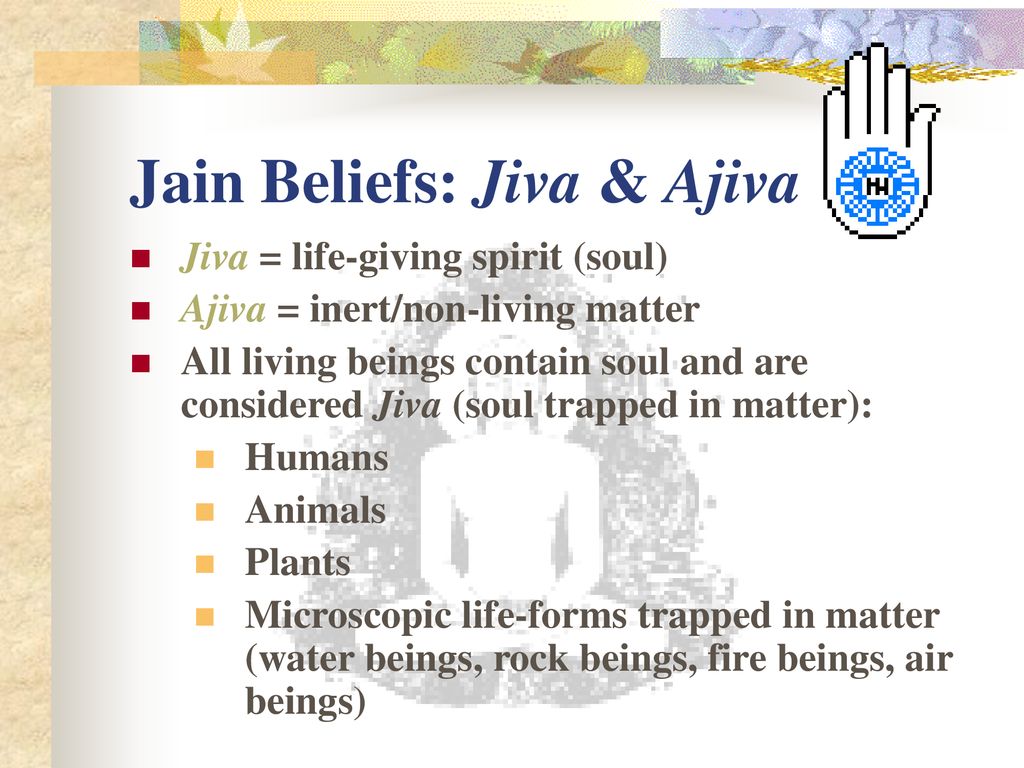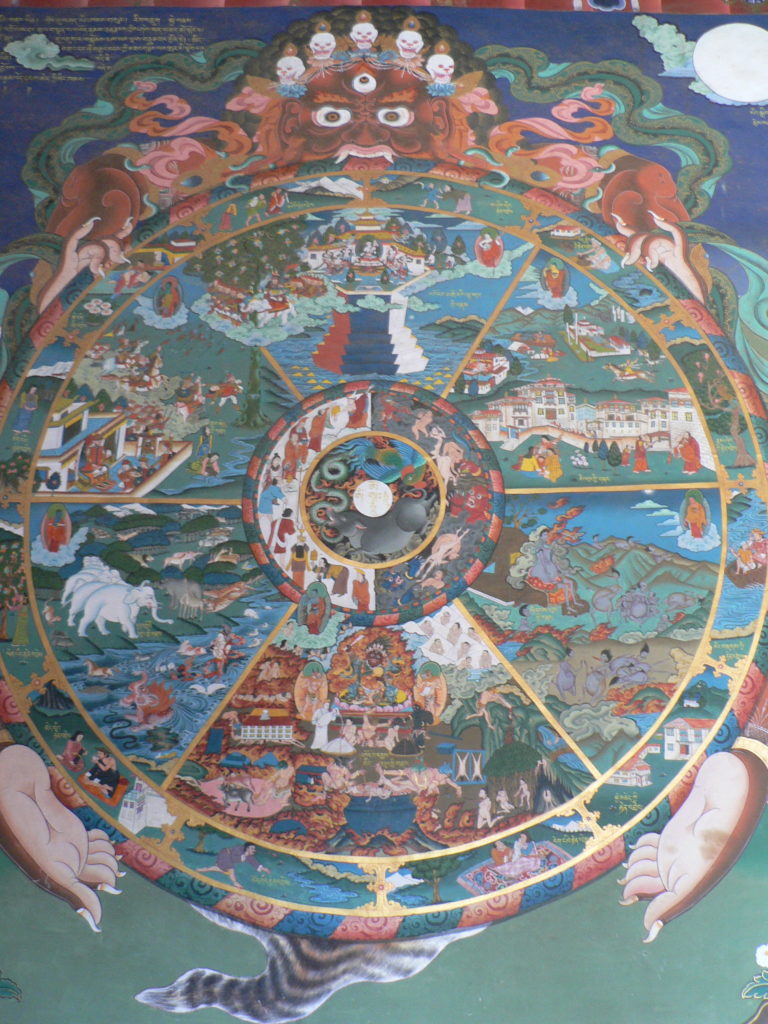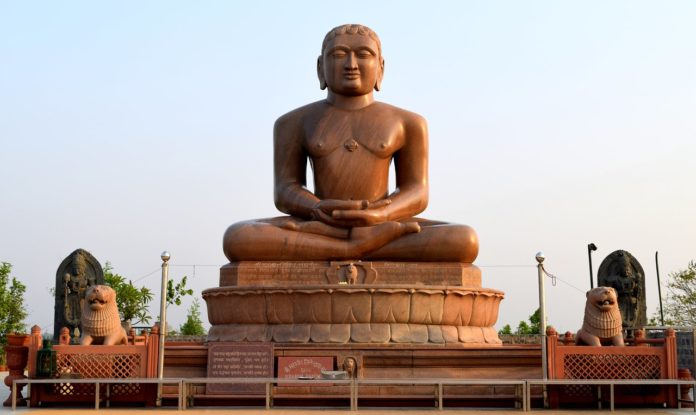Traditionally known as Jain Dharma, Jainism is an ancient Indian religion. Though Jains themselves claim it to be eternal, it came into prominence in India around the 5th century AD at the time when Vedic Hinduism was challenged by demands for reform of its ritualistic approach and the monopoly of Brahmans to conduct rituals. Jainism was one way to make religion and salvation more personal and attainable by each and everybody given the right actions performed by them. Jainism like Buddhism is a non-theistic religion. It does not propagate an idea of God and the devotion and prayer ceremonies are dedicated to an enlightened guru, primarily Jina Mahavira.
Never an all-Indian religion, Jainism has between four and five million followers all together. Known as Jains they reside mostly in India. Forming 0.37% of India’s population, mostly in the states of Maharashtra (1.4 million in 2011, 31% of Indian Jains), Rajasthan (13.97%), Gujarat (13.02%) and Madhya Pradesh (12.74%). Hailing from Gujarat, one of the centres of Jainism, Mahatma Gandhi was probably heavily influenced by Jainism in his youth. He is said to have taken the religious principle of ‘Ahimsa’ (doing no harm) from his Jain neighbours into his Hindu belief, and from it developed his own famous principle of Satyagraha (truth force) later on in his life. This example shows vividly how the different Indian religions are intertwined and share many common ideas.
Jainism today has two major sub-traditions, Digambaras and Śvētāmbaras, with different views on ascetic practices, gender and which texts can be considered canonical; both have mendicants supported by laypersons. The three main pillars of Jainism shared by both sects are non-violence that allies to all living beings including animals. It is the reason for strict vegetarianism among Jains. A second principle is non-absolutism, meaning that the ultimate truth and reality is complex and has multiple aspects. It could be named also tolerance of different ways of life and opinions. Number three is non-attachment (to material things). It holds that no person and no thing possess anything. ln Jainism, it is a virtue not to keep many possessions.
Jainism traces its spiritual ideas and history through a succession of twenty-four leaders or Tirthankaras, with the first in the current time cycle being called Rishabhadeva, whom the tradition holds to have lived millions of years ago and “Mahavira” around 600 BC being the twenty-fourth Tirthankara.

There are three main principles of the belief system of Jainism to which a Jaina beholds himself with Karma the basic principle within an overarching psycho-cosmology. Human moral actions form the basis of the transmigration of the soul. The soul is constrained to a cycle of rebirth, trapped within the temporal world, until it finally achieves liberation. Liberation is achieved by following a path of purification. Jains believe that karma is a physical substance that is everywhere in the universe. Karma particles are attracted to the soul by the actions of that soul when we do, think, or say things, when we kill something, when we lie, when we steal and so on. Karma not only encompasses the causality of transmigration, but is also conceived of as an extremely subtle matter, which infiltrates the soul obscuring its natural, transparent and pure qualities. It is thought of as a kind of (positive or negative) pollution, that taints the soul with various colours. Based on its karma, a soul undergoes transmigration and reincarnates in various states of existence like heavens or hells, or as humans or animals.
Jains cite inequalities, sufferings, and pain as evidence for the existence of karma. Various types of karma are classified according to their effects on the potency of the soul. The Jain theory seeks to explain the karmic process by specifying the various causes of karmic influx and bondage to it, placing equal emphasis on deeds themselves, and the intentions behind those deeds. The Jain karmic theory attaches great responsibility to individual actions, and eliminates any reliance on some supposed existence of divine grace or retribution. The Jain doctrine also holds that it is possible for us to both modify our karma, and to obtain release from it, through the austerities and purity of conduct.
Saṃsāra (transmigration) is another main principle. Jain philosophy refers to the worldly life characterized by continuous rebirths and reincarnations in various realms of existence. It is described as mundane existence, full of suffering and misery, and hence considered undesirable and worth renunciation. The Saṃsāra is without any beginning and the soul finds itself in bondage with its karma since the beginning-less time.
Moksha is a Sanskrit word, it refers to the only way for liberation or salvation of a soul from the world, saṃsāra, the cycle of birth and death. It is a blissful state of existence of a soul, attained after the destruction of all karmic bonds. Said to have attained its true and pristine nature of infinite bliss, infinite knowledge and infinite perception. A liberated soul is called siddha and is revered in Jainism. As the highest and the noblest objective that a soul should strive to achieve, Moksha is the only objective that a person should have; other objectives are contrary to the true nature of soul. With the right view, knowledge and efforts all souls can attain this state. That is why Jainism is also known as the “path to liberation”.

So what is the life of a Jain all about? One way to comply with the principles of Jainism is to renounce the world and become an ascetic. Hundreds of young people belonging to India’s Jain community are reported to have begun renouncing the material world to become monks (or nuns) who always walk barefoot, eat only what they receive as alms and never bathe or use modern technology. BBC reported about 20-year-old Dhruvi who decided to become a nun and will never again address her parents as mother and father. She will pluck out her own hair, always walk barefoot and eat only what she receives in alms. She will never use a vehicle, never bathe, never sleep under a fan and never speak on a mobile phone again. Hundreds of Jain youth are following the same path, their numbers rising each year, with women outnumbering the men. Community leaders attribute the rise in ascetism to three things: growing disenchantment among the young with the pressures of a modern world, gurus of the faith adopting modern technology to influence idealistic young people and finally, a superstructure of religious retreats that allows young people to experiment with monastic life long before they choose to commit to it. Another example is the way how young Jains living in the West are trying to reinterpret the traditions of their religion for 21st-century life. They are expanding the definition of nonviolence to encompass environmentalism, animal rights and corporate business ethics, flocking to veganism, volunteering alongside other faiths and learning to lobby through political internships and youth groups. Veganism a step beyond the vegetarianism that the faith requires is also on the rise among young U.S. born Jains who find it otherwise difficult to follow traditional rituals. Veganism is the practice of abstaining from the use of all animal products in diet, including milk, eggs, honey and the like. It is on the rise in Europe as well.
Contributed by:

Dr. Bettina Robotka, former Professor of South Asian Studies, Humboldt University, Berlin, Editor of the Defence Journal and a Consultant to the Pathfinder Group.





